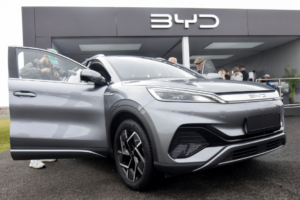Apple is exploring the development of expressive home robots, as revealed in a recent blog post on its Machine Learning Research website. The post, first spotted by MacRumors, highlights a project by an Apple research team that demonstrates how adding personality to robots can make them more engaging and functional. A video accompanying the research showcases two tabletop robot lamps, one labeled “Expressive” and the other “Functional,” performing everyday tasks.
The “Expressive” robot lamp exhibits human-like behaviors, such as dancing to music, mimicking sadness when denied a hike, and proactively assisting with tasks like lighting a workspace or reminding the user to drink water. In contrast, the “Functional” robot remains static unless directly commanded, underscoring the impact of expressive design on user interaction.
Both robots resemble desk lamps with articulating arms and are equipped with an LED light, camera, speaker, and projector. They respond to voice commands and gestures, with a voice assistant that sounds strikingly similar to Apple’s Siri. The expressive version’s playful and relatable behavior suggests Apple’s interest in creating robots that foster emotional connections with users.
While the prototype is not confirmed to be a commercial product, it aligns with reports that Apple is developing home robotics. Bloomberg’s Mark Gurman has previously indicated that Apple is working on a tabletop robot, potentially priced around $1,000, which could serve as a personal assistant, smart home controller, and FaceTime device.
The research, led by Yuhan Hu, Peide Huang, Mouli Sivapurapu, and Jian Zhang, aims to demonstrate the importance of expressiveness in robotics. The team’s findings suggest that robots with human-like characteristics are more likely to encourage user interaction and integration into daily life.
Apple’s foray into home robotics comes as the company expands its smart home ecosystem. While the Pixar-inspired lamp prototype lacks a screen, its projector functionality hints at potential versatility. However, questions remain about how such a device could fulfill all the roles of a smart assistant, display, and home controller.













